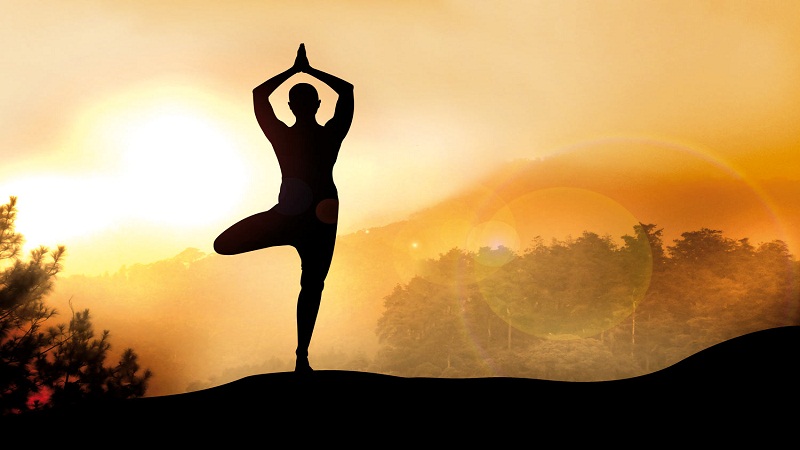The sun salutations (Surya Namaskar) are a well-known sequence of postures, in coordination with breathing, performed fluidly as a practice itself or to warm the body before yoga asana practice. They are a very good basis to start the hatha yoga and incorporated into different styles of yoga such as those currently designated with different names vinyasa, hatha yoga and classic ashtanga yoga. Actually, the sun salutations are themselves a form of hatha (yoga in physical appearance) and vinyasa yoga (for fluid movements are linked to breathing), and are also an aspect of traditional ashtanga yoga.
Each of the twelve steps comprising this old series of exercise has the power to exercise the spine in different directions and working for strength and flexibility. The sun salutations work the heart, increase coordination in the body and bring attention to the present moment, calm the mind and elevate the energy to be a vigorous practice.
This is an example, but other versions may have subtle variations. It is important to incorporate a conscious and controlled breathing in every position to generate a dynamic meditation.
The sun salutations are not considered asanas properly for the reason that the primary meaning of these positions are stable and comfortable i.e. asanas to do their work in depth should be held comfortably and stably for a few seconds and make some breaths. However, the eight positions who understand (as some are repeated) are all classic yoga postures.
Its name in Sanskrit is surya namaskar where Surya is the sun, creator of life and considered by the yogic spiritual tradition as a deity. Namas can be translated as the act of worship or curtsy. So the sun salutations also have a mystical connotation, or at least that is how it is sees, as a tribute to something transcendent to life, to our inner light and the gift of a new day. Originally the sun salutations were practiced in the morning with a devotional attitude, facing the East and repeated 108 times.
The difficulty level of surya namaskar is normal and the time required to perform a set of five ratites is more ore les ten minutes. Surya namaskar is a regular practice of yogis and it is especially done before doing a yoga pose as a warm-up since it is a dynamic practice and warms up the body well.
Tadasana
Stand on your feet well distributed weight, feet parallel, being firm but without tension. The arms are straight along your body, palms facing forward and your gaze forward. Inhale and exhale while your hands together in Pranamasana chest.
Uttanasana
Exhale as you bend forward. Keep hands on the floor next to your feet, fingers of your hands in line with your feet. Try to do it with your legs as straight as possible, but do not force yourself; you can bend your knees a little if necessary. Take your forehead to your knees.
Ashwa Sanchalanasana
Inhale as you bring your right leg back away. The instep must be completely on the floor for a better stretch. Fold the left leg 90 degrees to not hurt the knee and lead the eye up and open the chest.
Kumbhakasana
Hold your breath and take your left leg back, feet together with strong arms and stretched. Make sure your body form a straight line.
Ashtanga Namaskara
Exhale as you go to the posture and carry the chest toward the floor between your hands. Also chin, knees and feet should be on the floor. The hip is high.
Bhujangasana
Inhale while the lower body goes to the floor, hands pressed down to lift the chest gently like gliding, and arch your chest. Bring the head back to look, elbows gently against the body and shoulders away from your head. Most of the work should be felt in the lower back.
Adho Mukha Svanasana
Exhale and raise the hip in the dog-facing looking pose without moving the hands and feet of their position. Try to have the soles of the feet on the floor and your ears are in line with your arms and chest toward the floor.
Ashwa Sanchalanasana
Inhale and bring the right leg between your hands, keeping fingertips touching the floor. Again, the instep of the left leg should be stretched on the ground, and your eyes upward to open the chest.
Important Tips
- Make each day to begin with set of five with fluid movements and given proper breathing. You can add more sun salutations as you progress with your practice.
- At the end, stay for a few seconds in Tadasana, feeling the changes in your body, energy flow, and breathe deeply with yogic breathing to slow the heart rate.
- Lie down in savasana (relaxation pose) for a few minutes before resuming practice or quit.





